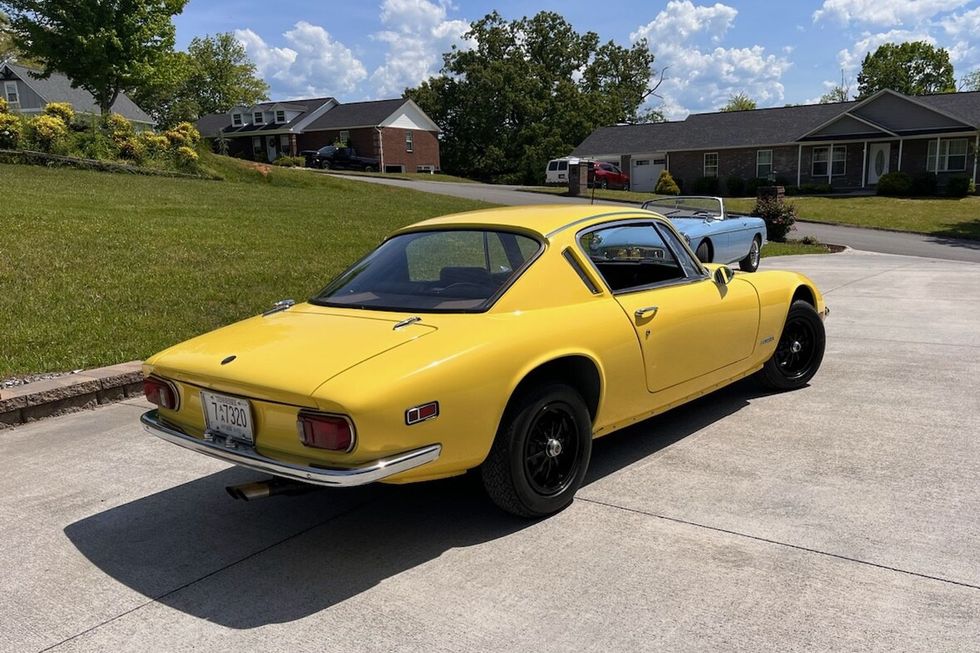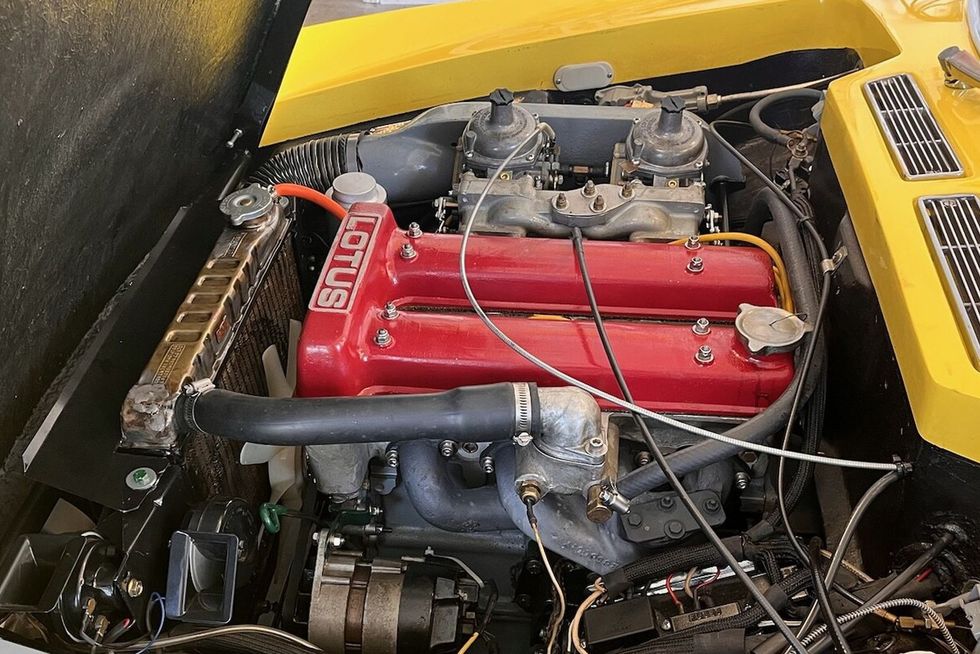
Buy
Resources
Entertainment
Magazine
Community
In This Article
Category:
News
A survey sent to California classic car owners with vehicles from the 1978 model year or earlier struck a nerve in the automotive enthusiast world, with rumors and concerns of potential classic car bans and restrictions spreading across the internet.
According to a report from the Daily Caller, the survey was sent on August 2nd with questions pertaining to how the vehicles are used, stored, and how often they are driven, including odometer reading requests. The survey comes at around the same time that the state of California is looking into allowing local jurisdictions to implement zero-emission zones, which raises even more worry for car enthusiasts living in the Golden State. Tack on California’s net-zero carbon emissions goal set for 2045, and California car lovers are understandably in a panic, with outspoken concerns regarding the possibility of authorities going door-to-door to seize and destroy classic cars falling on the more extreme side.
However, the concern and accompanying uproar seems to be largely unfounded speculation.
The California Air Resources Board (CARB) told Hemmings the classic car usage survey and similar surveys are “simply routine data updates” to ensure their overall vehicle fleet data is accurate, and that it has “nothing to do with vehicle ‘bans’.”
“The fleet model that CARB has maintained for decades is nothing more than an accounting of all emission contributions from motor vehicles, and has many data inputs, from DMV registration data and fuel sales volume to actual vehicle test results from our laboratory,” explained John Swanton, California Air Resources Board (CARB) Office of the Chair, Communications. “In this case, the information requested is to more accurately determine the fuel evaporative emissions contributions of pre-1978 vehicles.”

He went on to state that better information helps their staff more accurately account for evaporative emissions from fuel, a big contributor to smog; “These emissions happen whether the vehicle is running or not, so without additional data, the model will would apply average or typical use and storage conditions.”
Swanton also pointed to a common misconception regarding California’s push for Zero-Emissions in the new vehicle market and how it is seen as incompatible with classic cars. “This is simply not the case, and not only ignores California’s place in car culture, but also how California has been successful in significantly reducing the impacts of motor vehicle pollution,” he urged.
“Our process focuses on new vehicle standards and vehicle durability, the Smog Check promotes reasonable maintenance of engines and pollution control systems, and finally consumers decide at what point they want to move to newer vehicles.”
You read that right: According to Swanton’s statement, consumers can choose to drive any year of used vehicle that they want. “…and they are assured that they only need to reasonably maintain the vehicle to its original standards, not some moving target that requires reductions past what the vehicle was originally designed to do.”
“For ‘classic’ vehicles, many made before 1968, there are no emissions control systems to maintain, and no Smog Checks,” he confirmed. “For newer vehicles, ‘classic cars’ are chosen by the market, with those that have collector, performance, or lifestyle value being sought out and maintained, and those that don’t being retired by the choice of their owners.”
Swanson also touched on Zero or Low-Emission Zone concerns, stating that the concept is “as much, if not more of a congestion management tool, rather than a pollution one,” meaning it is not only targeting classic vehicles, but it is inclusive to all vehicles.
“Around the world, zones that have been implemented tend to be within the most highly congested parts of dense urban cores, with some giving preference to zero or low-emissions vehicles, and storage of classic car collections not really being an issue,” he concluded.
Recent
Porsche
Porsche has confirmed the official arrival of its hybrid 911 model, which will see its full debut on Tuesday, May 28. Whether or not sports car enthusiasts and Porsche aficionados accept the new hybrid as the newest 911 model, the sports car’s performance capabilities can’t be denied.
In its press release, Porsche boasted that its engineers logged over 3,000,000 test miles on the new 911. The hybrid was subjected to testing in the Artic Circle’s extreme cold environment and the unbearably hot deserts of Dubai, but Porsche didn’t stop there. Stop-and-go traffic scenarios were vigorously tested for drivers who plan to daily drive their new 911.
Perhaps the most impressive tests took place on the famous Nürburgring circuit. Porsche claims that Le Mans World Champion driver Jörg Bergmeister took the wheel, piloting the hybrid-powered 911 around the course in just 7:16.934 minutes, which is reportedly “8.7 seconds faster than the corresponding version of the predecessor model.”
Porsche has not yet released full performance data for the 2025 911, so it’s difficult to say exactly what those comparisons look like. Since the math makes sense, Porsche could be comparing the hybrid 911 to the 992 Carrera 4 GTS, which lapped the Nürburgring in 7:25.632. What we do know is that the 493-horsepower GT4 RS completed a lap at the Nürburgring in 7:03.121 minutes, just 14 seconds quicker than the road-going hybrid.
“For the first time in our icon’s 61-year history, we are installing a hybrid drive system in a roadgoing 911. This innovative performance hybrid makes the 911 even more dynamic,” Frank Moser, Vice President of 911 and 18 said. “We left nothing to chance during development and tested the new 911 under all sorts of conditions all over the world. Whether at a high drivetrain load in the demanding conditions of mountain passes or in the stop-and-go traffic of an urban environment, the new 911 has mastered even the most difficult challenges with aplomb."
Stay tuned for more details on May 28, when Porsche is scheduled to reveal the beginning of a new era, the hybrid 911 sports car.
Keep reading...Show Less
In the early 1960s, Lotus debuted the Elan, an extremely lightweight, exceptionally small sports car. With its backbone chassis and fiberglass body, the Elan—available as a roadster or fixed-roof coupe—weighed a little over 1,500 pounds. A Ford Kent-based engine with a twin-cam, 16-valve cylinder head gave the diminutive sports car brisk performance, allowing the tiny Elan to punch well above its weight class. One thing thin the Elan was never noted for, however, was comfort, nor convenience, what with only two seats.
Enter the Elan +2, a much larger car built with the same design and engineering features, but with space for two children in the back and more comfort for the driver and front passenger. The Plus 2 debuted in 1967 and not long after an updated version, the +2S, was released with additional luxuries. Unlike the Elan, the +2 was only ever produced as a coupe. This 1972 Lotus Elan +2S 130 now offered on Hemmings Auctions appears to be a road-ready example of the first four-seater from Lotus. The “130” portion of the name came from the revised, higher-output 126-horsepower engine in the model released in the early 1970s.

Like the original, the Elan +2S featured a backbone frame and a fiberglass body. Though still compact by almost any definition of a car from the 1960s, the four-seater was bigger in every dimension. Lotus designers and engineers were tasked with creating a car that “must be capable of transporting two adults and two children 1,000 miles in comfort with their luggage.” The Plus 2’s 96-inch wheelbase was a foot longer than the original. And its overall length of 169 inches was a full two feet longer than the earlier car. Additionally, it measured 10 inches wider and two inches taller. The Plus 2 was still relatively small, itself measuring one foot shorter in both wheelbase and overall length compared to a 1965 Ford Mustang Hardtop.
Those plus-size dimensions greatly contributed to the comfort inside the car, but with road testers of the day still praising the car for maintaining the Elan’s adroit handling. Motor Sport magazine from the U.K. described the Plus 2’s steering as “incredibly light and precise.” In detail, they wrote, “The all-round independent suspension with its racing-like wishbone and link lay-out gives the car superb handling, of that there is no doubt. The glory of it is that you can whip along country lanes with their twists and turns without drama, in complete safety and not working hard while drivers in lesser vehicles struggle to keep up.”

Powertrain
The “big-valve” version of the 1,558-cc Lotus-designed/Ford-based twin-cam four-cylinder engine in the +2S 130 was rated at 126 horsepower and 113 lb-ft of torque, giving the car brisk acceleration, as it weighed a little over 2,000 pounds. A four-speed manual directed power to the rear wheels. Road testers of the +2S and +2S 130 models reported 0-60 mph times at right around, or even just under, eight seconds.
Technically, by 1972, there was no such model as the Elan +2S. Rather, Lotus dubbed the car the +2S 130, or alternatively the Plus 2 130. In either case, despite the obvious origins and former use of the name with the model, “Elan” was dropped from the moniker by that time. The Elan name did reappear the following year. Though Elan production ceased in 1973, the Elan +2 continued through 1974.

Restored Elan +2S 130
The notes on this 1972 Lotus Elan +2S 130 currently listed on Hemmings Auctions indicate that this Plus 2 has been restored, including a rebuild of its original engine and four-speed manual transmission, completed some 3,000 miles ago. The seller shared that the water, oil and fuel pumps were replaced, while the radiator was rebuilt. Additional fresh components are said to be the brake discs, updated Rotoflex drive couplings and wheel bearings, all as part of a chassis rebuild.
The seller reports that the fiberglass bodied was disassembled, repaired and professionally refinished before reassembly. The original brightwork was rechromed as necessary and the original glass reinstalled with new seals. Fresh Pirelli Cinturato rubber was mounted on refinished original Lotus 10-spoke alloy wheels. According to the Classic Lotus Elan Register, this +2S 130 is one of 1,879 +2S and +2S 130 models built out of a total production run of 5,139 Elan +2’s.
Take a look at this 1972 +2S 130 at Hemmings Auctions to see what a right-sized Lotus Elan looks like.

Keep reading...Show Less









